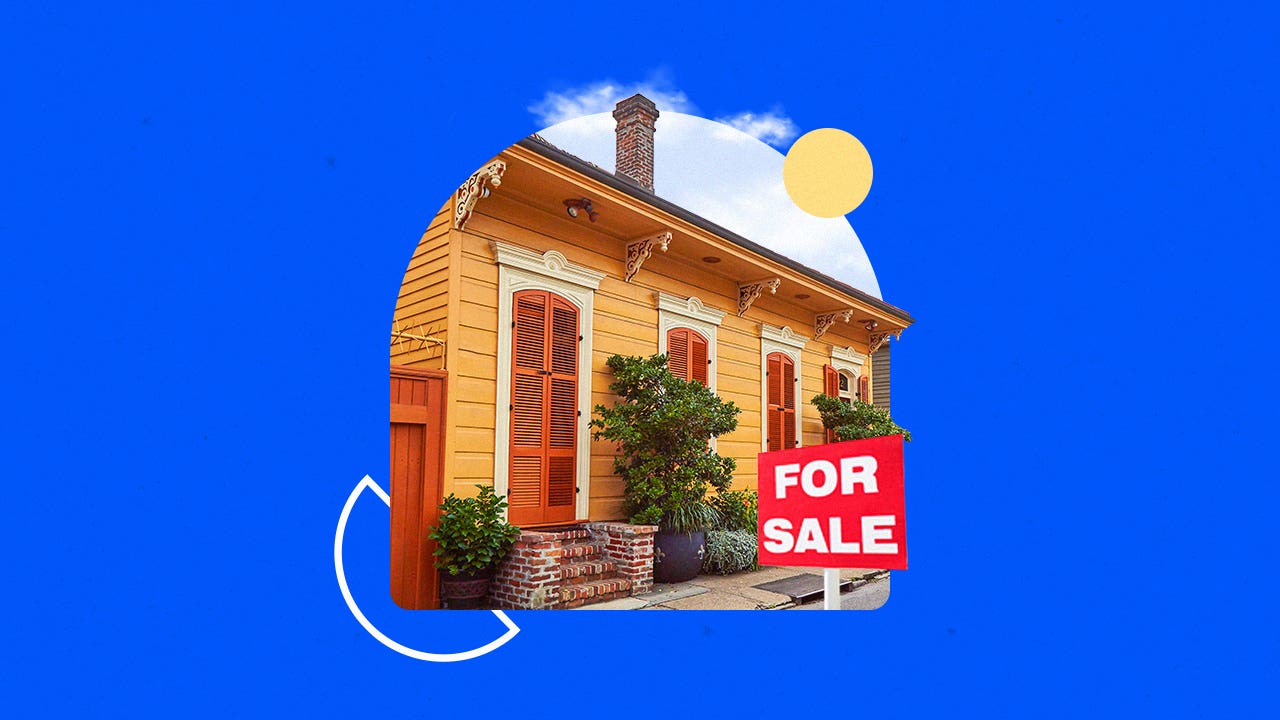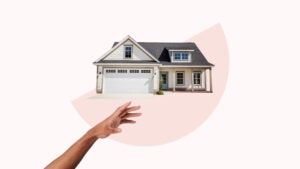73% of aspiring homeowners cite affordability as their primary obstacle

Key takeaways
- Most Americans view homeownership as a hallmark of the American dream
- Affordability poses the biggest obstacles to would-be homeowners
- The majority of potential buyers are willing to make sacrifices to find affordable housing
Homeownership is a proverbial part of the American dream. Yet it is moving farther out of reach for many Americans, according to a new report from Bankrate.
Bankrate’s Financial Security survey finds that fully 74 percent of Americans consider homeownership a key component of the American dream. Respondents placed a higher value on it than on any other indicator of economic stability, including a comfortable retirement, a successful career and a college degree.
But close to three-fourths of would-be homeowners say affordability blocks them from buying. Those who are still renting claim the combination of elevated home values and still-high mortgage rates create obstacles to owning a residence.
“Homeownership is still the centerpiece of the American dream, but affordability issues such as high home prices, income that is too low or not being able to afford the down payment and closing costs are holding back nearly 3-in-4 aspiring homeowners,” says Greg McBride, Bankrate’s chief financial analyst. “Affordability is a central issue for owners and non-owners alike, with 64 percent of Americans willing to sacrifice, such as downsizing or moving out of state, to find more affordable housing.”
Homeownership: still a key part of the good life
Bankrate’s poll of 2,545 U.S. adults was conducted in late March. The survey found that owning a home remains the number-one feature of the American dream, cited by 74 percent of Americans. That milestone placed homeownership ahead of being able to retire (cited by 62 percent of respondents), having a successful career (61 percent), owning a car or truck (52 percent), having children (42 percent) or getting a college degree (33 percent). (Respondents could select more than one answer.)
Not that everyone buys into the dream. Among non-homeowners, 12 percent of those surveyed don’t want to ever own a home under any circumstances.
But most do. And they find it just too tough to afford right now. Specifically, the most-cited hurdles among these aspirations were not enough income (46 percent), home prices that are too high (42 percent) and the inability to afford down payment and closing costs (40 percent).
Other reasons cited include high mortgage rates (29 percent), poor credit (25 percent), just not ready yet (25 percent), too much debt (17 percent) and lack of inventory of homes available for sale (14 percent). (Respondents could select more than one answer.)
Overall, personal affordability problems (amount of income, down payment size) were cited by 73 percent of non-owners who want to own a home eventually. Market conditions (low inventory, high mortgage rates, high home prices) were cited by 53 percent of respondents.
Some homeowners have regrets
Bankrate also asked homeowners about buyer’s remorse. Over half of those who have taken the plunge — 55 percent — said they have no regrets: They understand that a home purchase usually requires trade-offs and compromises.
Among the minority of homeowners who express regrets, the top reason was that maintenance and other “hidden” home-related costs were higher than expected (41 percent). A distant second was buying a too-small house (25 percent), followed by bad location (16 percent), a mortgage payment that stresses the budget (16 percent), overpaying (14 percent), buying too big a house (12 percent), not getting the best mortgage rate (12 percent) and don’t think it is a good investment (12 percent).
“Being financially prepared and going in with both eyes open as to all that is involved in homeownership are necessary to avoiding regrets,” McBride said.
Among homeowners, 69 percent said they would buy their current home if they had it to do all over again, 18 percent would not and 13 percent didn’t know.
Homeownership is still the centerpiece of the American dream, but affordability issues …are holding back nearly 3-in-4 aspiring owners.— Greg McBride, Bankrate Chief Financial Analyst
Sacrificing to own a home
Starting in 2022, the combination of high home prices and a spike in mortgage rates has created an affordability squeeze for first-time buyers. To gain insight into how Americans are coping, Bankrate asked what sacrifices aspiring homeowners would be willing to make to acquire a place (they could cite multiple answers).
Among all respondents, homeowners and non-owners alike, more than one-third (36 percent) wouldn’t be willing to do anything to find more affordable housing. Of those who would take penny-pinching steps, the most common answers were: 39 percent would downsize their living space, 37 percent would move out of state, 30 percent would buy a fixer-upper and 28 percent would move farther from family and friends.
Other sacrifices cited include taking on roommates or living with additional family members (21 percent), moving farther away from work (19 percent) and moving to a less-desirable area (16 percent).
Which generation prizes homeownership the most?
While owning a home is the most-cited element of the American dream, the sentiment is especially strong among older generations. It’s cited by 84 percent of Baby Boomers (ages 58-77) and 76 percent of Gen Xers (ages 43-57). Younger Millennials (age 27-33) and members of Gen Z (ages 18-26) are more likely to cite having a successful career (64 percent) than owning a home (62 percent of younger Millennials, 63 percent of Gen Z) as part of the American dream.
Among those aspiring to own, older Millennials (ages 34-42) point to being unable to afford the down payment and closing costs (53 percent) more than any other reason or any other age group. Younger Millennials point to the array of affordability issues: not having enough income (49 percent), home prices being too high (47 percent) and not being able to afford the down payment and closing costs (42 percent). Gen Z cites not enough income (48 percent) or just not being ready yet (43 percent).
The lack of regrets about purchasing the current home is common among Boomers (64 percent reported no misgivings) and Gen X (56 percent). But younger generations – who were more likely to have bought in a challenging market – express second thoughts. Just 44 percent of millennials and 31 percent of Gen Z homeowners have no regrets. Among those who do, the top reason for the buyer’s remorse is that home maintenance and other costs are higher than expected.
When it comes to the steps Americans are willing to take to find affordable housing, Baby Boomers were most willing to downsize (52 percent), while Gen Xers were nearly equally likely to be willing to move out of state (43 percent) or downsize (41 percent).
FAQs
-
Ever since the Great Recession, home values have been rising at a faster pace than incomes. That trend accelerated during the pandemic when mortgage interest rates plunged to record lows. Today’s still-high home prices (despite 2022’s rise in rates) are a function of supply and demand. Supply is squeezed in part because homebuilders haven’t been building at the same pace as they did before 2005: There’s only a 2.6-month supply of homes on the market (vs the more typical 4-5 months), according to the National Association of Realtors (NAR). On the demand side, the millennial generation is a huge demographic group that has entered prime home-buying years.
-
There were 85.2 million owner-occupied housing units and 44.2 million renter-occupied homes in the United States as of the fourth quarter of 2022, according to the Census Bureau. The overall American homeownership rate is 65.9 percent, but that varies by race, income, age and location.
-
The median price of homes sold by Realtors in February 2023 was $363,000, according to NAR. While it’s retreated since its high of $400,000+ in 2022, that’s still well above the $256,000 median in 2019.
Methodology
Bankrate.com commissioned YouGov Plc to conduct the survey. All figures, unless otherwise stated, are from YouGov Plc. Total sample size was 2,545 US adults (18+), among whom 1,338 were homeowners and 1,207 were not homeowners. Fieldwork was undertaken March 22 – March 24, 2023. The survey was carried out online and meets rigorous quality standards. It employed a non-probability-based sample using both quotas upfront during collection and then a weighting scheme on the back end designed and proven to provide nationally representative results.






